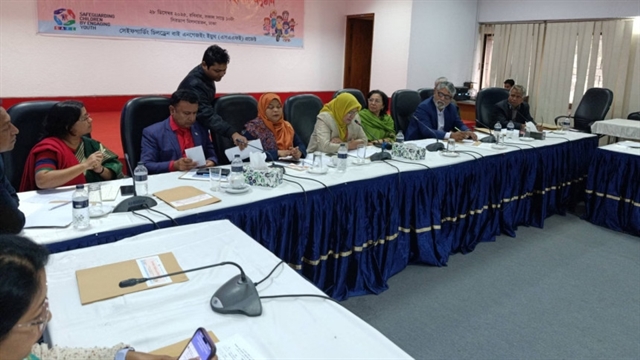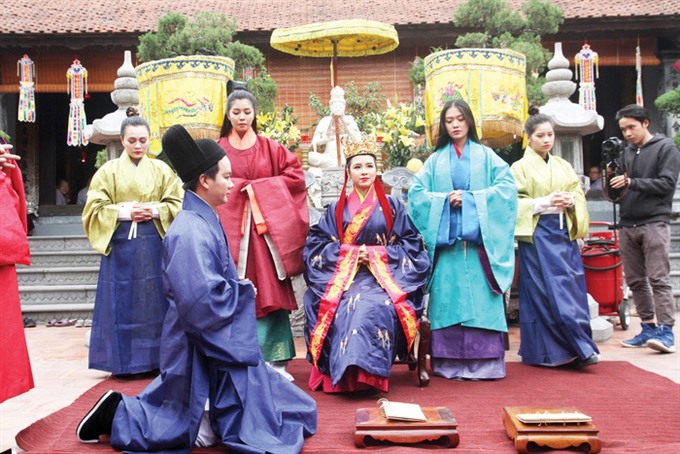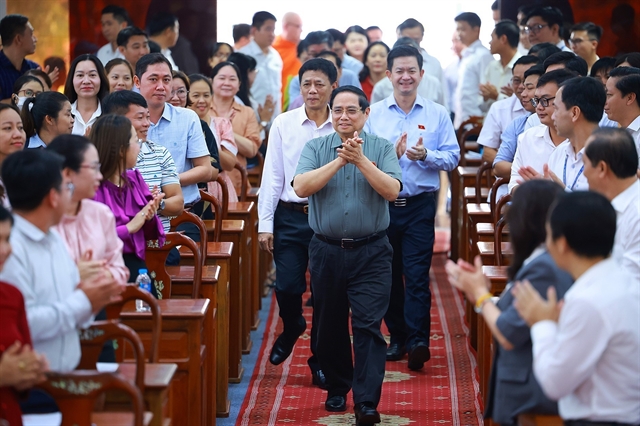 Life & Style
Life & Style

Young people are taking part in special projects that replicate traditional Vietnamese clothes worn by royalty of various dynasties.
 |
| Ancient threads: Vietnamese clothes at the showcase of the coronation of the Queen Mother under the later Lê Dynasty (1437-1471). The event is part of the project Dệt Nên Triều Đại (Sewing the Reigns) which makes traditional costumes worn in the later Lê Dynasty. (Photo by Phương Chinh) |
HCM CITY — Young people are taking part in special projects that replicate traditional Vietnamese clothes worn by royalty of various dynasties.
The project Dệt Nên Triều Đại (Sewing the Reigns), which makes traditional costumes worn in the later Lê Dynasty (1437 to 1471), was created to help Vietnamese students at home and abroad learn more about the country’s history and culture.
It was launched by the Việt Nam Centre, a non-profit organisation established last year by a group of Vietnamese-Australian students.
“Our project is not about clothes or hats. It’s about culture. Through our work, we hope to introduce Việt Nam, its history and culture to the world,” said Lê Ngọc Linh, co-founder of the centre.
Linh and her staff have researched many Vietnamese and Asian documentaries, books, paintings and sculptures.
They have also worked with cultural researchers and historians, including literary researcher Trần Quang Đức, author of Ngàn Năm Áo Mũ (Thousands of Years of History of Việt Nam’s Traditional Costumes), a book on the history of Vietnamese clothes which was released in 2013.
Their first display of their productions, introduced in December in Hà Nội, included dozens of clothes used for the royals.
A showcase of the coronation of the Queen Mother under the later Lê Dynasty has also been revived.
“We spent two weeks making a dress for a eunuch and four months for a coat for the Queen. Each costume is worth around VNĐ30 million (US$1,300),” said Linh.
“The performance by Linh and her staff left a very strong impression on audiences,” said Nguyễn Đức Lộc, who visited the show.
Lộc is a member of the Đình Làng Việt (Vietnamese Communal House) Group, a Hà Nội-based community keen on preserving the ancient values of communal houses.
The group was launched in 2014 and has attracted more than 4,000 members. It has organised many exhibitions, showcases, talk shows and art camps featuring traditional Vietnamese culture and lifestyles, aimed at students and young people.
The group’s latest event was held early this month as a platform to showcase the traditional customs of the Vietnamese Lunar New Year festival in Hà Nội.
The event included traditional worship and a ceremony to erect cây nêu, a tall bamboo tree, in the house’s yard.
The bamboo pole is stripped of its leaves, except for a tuft on top so that it can be wrapped or decorated with red paper for good luck. Bows, arrows, bells and gongs are placed on the treetop with the hope that bad luck of the past year is chased away and everyone will have a happy New Year.
The event attracted more than 30 artists in various fields.
In HCM City, Nguyễn Thị Kiều Diễm, a graduate of Hoa Sen University in the city, has released a book of paper-crafted figures about costumes used in tuồng, a Vietnamese classical drama originating in the 12th century.
Her book, Hát Bội Hành Tội Người Ta (Singing Tuồng Fascinates People), contains seven colourful papercrafts and explanations about tuồng and its costumes used in various performance styles.
Papercraft uses paper or cards to create three-dimensional objects that can be folded, cut, glued, molded, stitched or layered. They depict tuồng artists on stage, who wear make-up and wear beautiful costumes.
“I spent four hours and a half making a template. However, writing the explanations was the most difficult job,” said Diễm.
Diễm used information from three books on tuồng written by cultural researchers Nguyễn Vĩnh Huế, Lý Tuần Khắc Dụng, Nguyễn Lộc and Võ Văn Tường.
“I hope young people will improve their knowledge and love for tuồng through my book,” she said. – VNS




